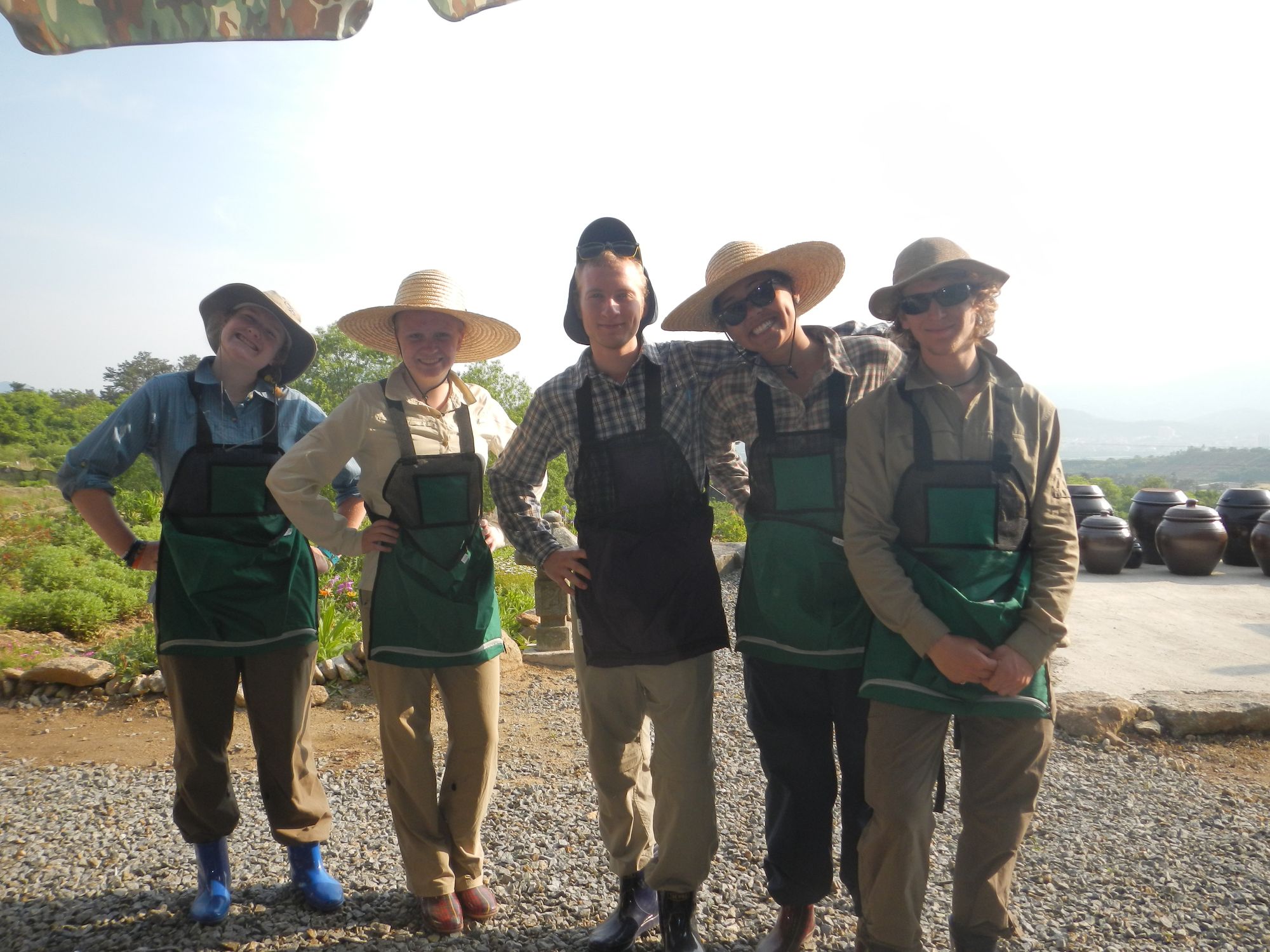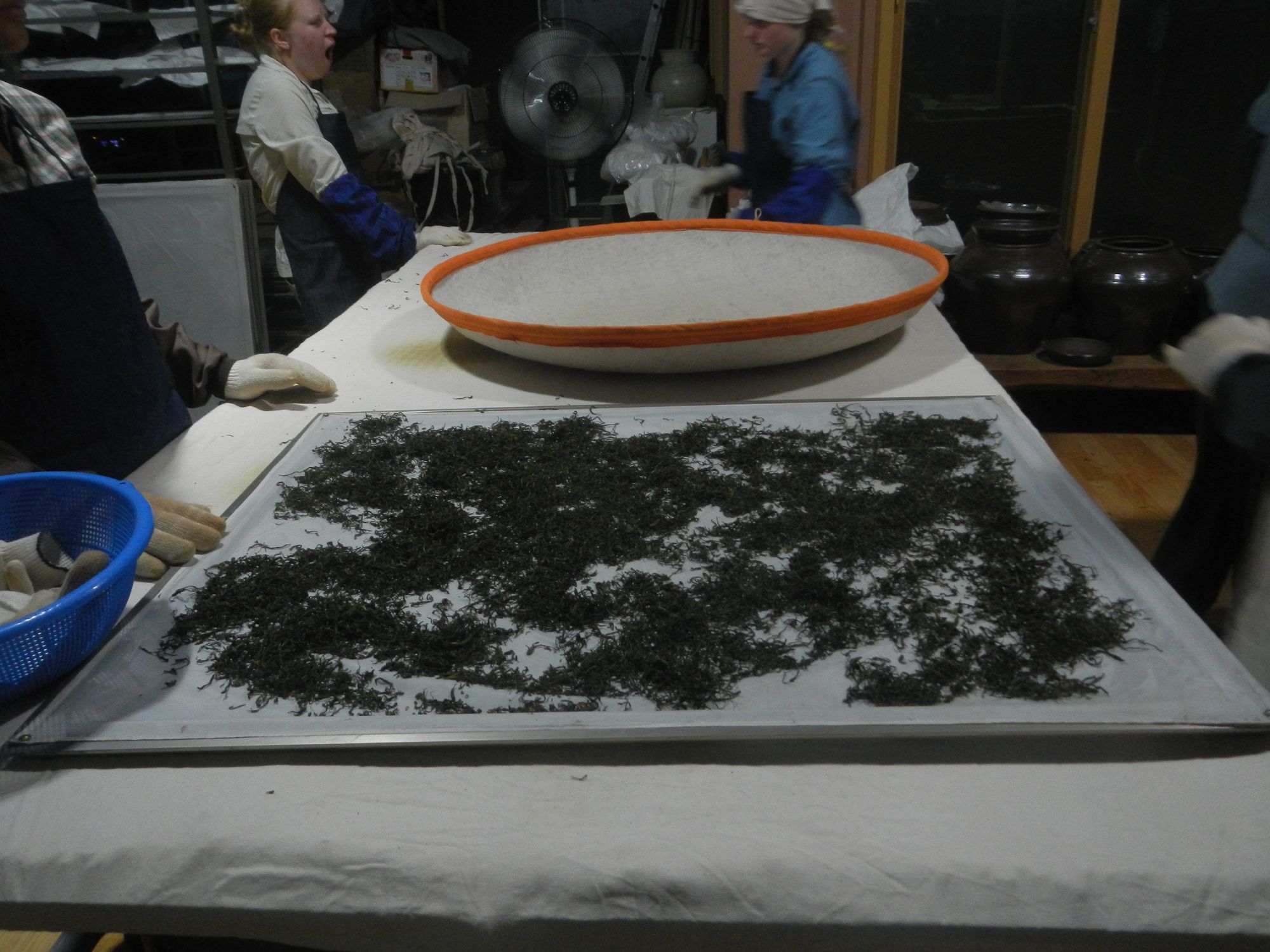Korea 2012 Guest Post – Julie Miller 3
Guest Post by Julie Miler:
Long after this trip has ended there will be several experiences that will still remain vividly in my memory. One of these experiences happened last week near the small town of Gurye. Nothing that I have done on this trip has enhanced my knowledge of tea culture more than working with Mr. Hong in his tea fields. Not only were we able to see the entire production process from start to finish, we were able to interact with the wonderful people that oversee and help with the production of this beverage we have all come to love so much.

The first morning, we were greatest with an amazing breakfast of toast, homemade strawberry jam, and yogurt. It may not be the most traditional Korean breakfast, but it certainly filled us up for the day that lay ahead. Picking tea was unlike anything I have ever done before. Done up in our fabulous outfits, consisting of wide brimmed hats, plastic shoes, and an apron complete with tea pouch, we were ready to begin the days work.
The diligence and endurance needed for hours of work, hunched over in the scorching sun, is nothing to laugh at. The woman who do that same work day after day, from march till may, have my utmost respect. They also are far better at it than any of us. When we were done picking, the five us emptied our take into a basket. Our combined tea equaled the amount collected by just one of the grandmothers.
After dinner. There was another new experience awaiting us. The days tea was ready for processing. All of us donned arm guards and four separate layers of gloves in order to withstand the head of the shaqing apparatus. We all leaned over the burning bowl and took turns stirring the tea with our hands. After each round we had to remove the tea and place it on the table to cool. For the first few rounds, we also rolled the tea. Rolling the tea involved collecting a pile of the tea leaves and rolling them roughly into a ball. Ever couple of minutes, we would pass our tea to the person next to us and begin again.
Every round the temperature of the wok got cooler and the leaves became more brittle. After a few rounds we no longer rolled the tea and simple cooled it on the table. By the end of the night, my back was aching and my arms were burning, but I felt the greatest sense of accomplishment because, laid out before me, was a whole table filled with green tea.
The next day, was more of the same. We spent hours upon hours in the hot sun collecting tea. Normally, this would dampen most people’s spirits, but we pushed through for the love of tea. Playing games while we worked helped as well. You never know how seldom some letters are used until you have to come up with a food or an animal that begins with every letter of the alphabet.

On the third day, we got to learn the production for padiyocha. It was similar to the green tea we produced a few days before, but there was a lot more rolling involved. Mr Hong then put all the tea into an ongi pot to sit overnight. It is pretty cool how two traditional Korean practices work together to produce one amazing product.
The time I spent with Mr Hong definitely gave me a greater appreciation for the tea I drink everyday. The production process is no longer a bulleted list on paper; it is a set of concrete steps that I have performed myself and understand. The people who produce the tea are no longer strangers; they are the friendly women who frantically waved at us to take water breaks and told us the best spots to pick tea. Above all, I now know how much work goes into the production of the wonderful beverage that I consume so much of.